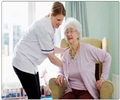A new study has revealed that the number of young people becoming registered nurses has grown sharply since 2002.

The surge reverses a pattern first observed in the early 1980s of fewer young women entering the nursing profession as other career opportunities expanded. The findings are published in the December edition of the journal Health Affairs.
"The spike we've seen in young women becoming registered nurses is dramatic," said David Auerbach, the study's lead author and an economist at RAND, a nonprofit research organization. "If the trend continues, it will help to ease some of the concerns about future nursing shortages."
A decade ago researchers predicted that the United States could face a shortage of 400,000 registered nurses by 2020 because fewer young people were entering the profession. Between 1983 and 1998 the proportion of the registered nurse workforce under age 30 dropped from 30 percent to 12 percent, while the average age of working nurses increased from age 37 to 42.
Researchers evaluated the latest trends in the nursing workforce by examining information about the employment of registered nurses from 1973 to 2009 from the Current Population Survey and the American Community Survey, two large surveys sponsored by the U.S. government. Additional information from the U.S. Census Bureau also was used.
The study found that while the number of registered nurses aged 23 to 26 peaked at more than 190,000 in 1979, it fell to fewer than 110,000 by 1991 and remained low throughout the following decade.
Advertisement
If the number of people entering nursing continues to grow at today's levels, researchers say that by 2030 there will be enough registered nurses to fully meet the nation's projected needs. If that entry plateaus, however, the workforce will barely keep pace with population growth – which would likely result in continued shortages.
Researchers say there are several reasons that interest in nursing has surged. Several major initiatives were launched to increase interest in nursing careers. Meanwhile, nurse training programs expanded enrollment and created innovative efforts that allows some people to get training on an accelerated schedule.
In addition, the economic downturn and a continued decline in manufacturing jobs has reduced many of the career opportunities that had attracted young people who otherwise might choose nursing.
Source-Eurekalert









